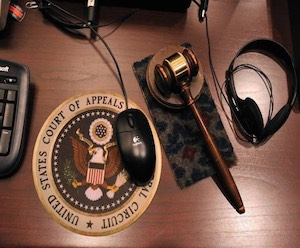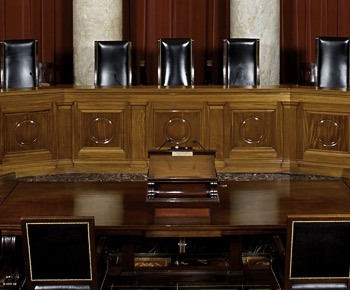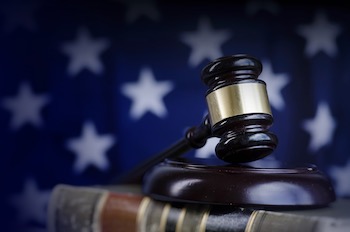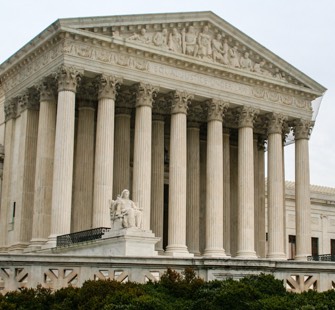Patent Eligibility Relief for the Life Sciences Sector
 Several weeks ago, the United States Court of Appeals for the Federal Circuit issued a decision in Rapid Litigation Management LTD v. Cellzdirect, Inc. The patent owner appealed the decision of the district court, which had concluded that claims of U.S. Patent No. 7,604,929 were patent ineligible under the “law of nature” doctrine. The unanimous Federal Circuit panel, which was made up of Chief Judge Prost (writing for the majority), Judge Moore and Judge Stoll, vacated and remanded the case for further proceedings. The Federal Circuit ruled that the ‘929 patent claims in question were not directed to a patent-ineligible concept.
Several weeks ago, the United States Court of Appeals for the Federal Circuit issued a decision in Rapid Litigation Management LTD v. Cellzdirect, Inc. The patent owner appealed the decision of the district court, which had concluded that claims of U.S. Patent No. 7,604,929 were patent ineligible under the “law of nature” doctrine. The unanimous Federal Circuit panel, which was made up of Chief Judge Prost (writing for the majority), Judge Moore and Judge Stoll, vacated and remanded the case for further proceedings. The Federal Circuit ruled that the ‘929 patent claims in question were not directed to a patent-ineligible concept.
This decision could well mark a significant turning point and give real relief to innovators in the life sciences arena. Up until now, the Federal Circuit has avoided a narrow reading of the Supreme Court’s recent precedents in Mayo v. Prometheus and AMP v. Myriad Genetics. It is difficult to know exactly why that has been the case, but one strong possibility is that the Federal Circuit was looking to the Supreme Court to clarify and narrow the expansive language that they used in Mayo and Myriad.
SCOTUS refuses to take Sequenom v. Ariosa
 On June 27, 2016, the United States Supreme Court denied certiorari to Sequenom, Inc., which will let stand a decision of the United States Court of Appeals for the Federal Circuit that ruled a truly revolutionary medical test to be patent ineligible.
On June 27, 2016, the United States Supreme Court denied certiorari to Sequenom, Inc., which will let stand a decision of the United States Court of Appeals for the Federal Circuit that ruled a truly revolutionary medical test to be patent ineligible.
The innovation in question is a test for detecting fetal genetic conditions in early pregnancy that avoided dangerous, invasive testing techniques that are potentially harmful to both the mother and the fetus.
The invention, which was embodied in U.S. Patent No. 6,258,540, claimed certain methods of using cffDNA. The patent teaches technicians to take a maternal blood sample, keep the non-cellular portion (which was “previously discarded as medical waste”), amplify the genetic material that only the inventors had discovered was present, and identify paternally inherited sequences as a means of distinguishing fetal and maternal DNA. The claimed method does not preempt other demonstrated uses of cffDNA.
Why courts rely on §101 when other sections of the statute seem far better suited
 Diamond v. Diehr specifically warned about §102 improperly influencing the §101 analysis, so a §101 analysis was presumably considered separate from a §102, §103 or §112 analysis. Fast forward a little more than a generation. In 2012, Mayo Collaborative Services v. Prometheus Laboratories, Inc. was decided by the Supreme Court, which appeared to disregard the warning of Diamond v. Diehr.
Diamond v. Diehr specifically warned about §102 improperly influencing the §101 analysis, so a §101 analysis was presumably considered separate from a §102, §103 or §112 analysis. Fast forward a little more than a generation. In 2012, Mayo Collaborative Services v. Prometheus Laboratories, Inc. was decided by the Supreme Court, which appeared to disregard the warning of Diamond v. Diehr.
Mayo v. Prometheus addressed the question of whether two patents concerning the use of thiopurine drugs to treat autoimmune diseases satisfied the §101 requirement. The Supreme Court ended up holding that the patents were invalid under §101. But its reasoning confused many patent practitioners and litigators. Justice Breyer, writing for a unanimous Court, stated that, because the steps of “administering” and “determining” were well known and conventional, they were not patent-eligible subject matter. This analysis seems to combine the requirement of patent eligibility with that of novelty and nonobviousness. In other words, in Mayo, the Supreme Court did a corollary of what it specifically warned against doing in Diehr.
06.29.16 | patent eligibility, Patent Issues, section 101, Supreme Court Cases | Gene Quinn
Eli Lilly, Pfizer among those supporting Sequenom cert petition
 Recently, a group of amici led by Eli Lilly filed an amici curiae brief with the United States Supreme Court in the matter of Sequenom, Inc. v. Ariosa Diagnostics, Inc. The Eli Lilly brief was filed in support of the petitioner, Sequenom. Eli Lilly is joined in this brief by Eisai Inc., Upsher-Smith Laboratories, Inc., Pfizer Inc., and Etiometry, Inc.
Recently, a group of amici led by Eli Lilly filed an amici curiae brief with the United States Supreme Court in the matter of Sequenom, Inc. v. Ariosa Diagnostics, Inc. The Eli Lilly brief was filed in support of the petitioner, Sequenom. Eli Lilly is joined in this brief by Eisai Inc., Upsher-Smith Laboratories, Inc., Pfizer Inc., and Etiometry, Inc.
On March, 21, 2016, Sequenom filed a Petition for Writ of Certiorari in the Supreme Court, challenging the decision of the United States Court of Appeals for the Federal Circuit in Ariosa Diagnostics, Inc. v. Sequenom, Inc. If the Supreme Court takes this case, they will be asked to reconsider the unfortunate breadth of their prior ruling in Mayo Collaborative Servs. v. Prometheus Labs. See SCOTUS Blog Founder asks Supreme Court to Reconsider Mayo.
04.19.16 | Biotech, patent eligibility, Patent Issues, Pharma, posts, Supreme Court Cases | Gene Quinn
Litigation Funding in Uncertain Patent Eligibility Times
 A patent is an exclusive right. This means that the owner of a patent can prevent others from engaging in activities that are covered by an issued patent. But as is true with any right, a patent is only worth something if the owner is willing to take action to preserve the rights and litigate against those who are treading on the rights granted. In the United States, that means litigation in federal district court, which can easily cost millions of dollars.
A patent is an exclusive right. This means that the owner of a patent can prevent others from engaging in activities that are covered by an issued patent. But as is true with any right, a patent is only worth something if the owner is willing to take action to preserve the rights and litigate against those who are treading on the rights granted. In the United States, that means litigation in federal district court, which can easily cost millions of dollars.
Today, given the climate within the industry, being willing to take action when infringement is suspected is only the first hurdle. Yes, the decision to undertake litigation is a difficult one regardless of whether it is made by a company or an individual. Attention is diverted from other endeavors and opportunities, and there is a very real financial cost associated with litigating a dispute. Litigation is not free.
01.11.16 | Federal Circuit Cases, patent eligibility, Patent Issues, Patent Litigation, posts | Gene Quinn


No Comments
07.28.16 | Biotech, Federal Circuit Cases, patent eligibility, Patent Issues, posts | Gene Quinn